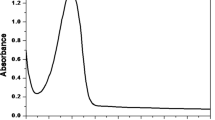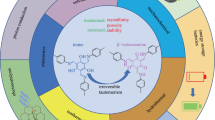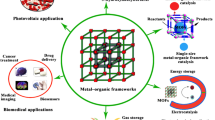Abstract
We developed a Polyvinyl butyral (PVB)-zirconium alkoxide hybrid hollow tube by air-gap spinning. Enzyme (β-galactosidase and lipase) was physically entrap-immobilized and disseminated throughout the hollow tube architecture. The enzyme immobilized PVB-Zr hybrid tube shown its stability in phosphate buffer solution, electrolyte solution, and other organic solvents. The apparent Michaelis constant Km for immobilized β-galactosidase (IβG) was 0.079 mol/l compared to 0.067 mol/l for free enzyme. The maximum velocity Vmax was 4.9 μmol.min−1, whereas it was 11.5 μmol.min−1 for free enzyme. The preserved activity of IβG was found to be 90%, after ten reaction cycles. Moreover, up to 70% conversion for citronellyl acetate after 50 h. was achieved by immobilized lipase (IL) in hexane solution. The activity of IL was found to be 62% after 8 repeated uses where free enzyme retained 15% activity. Overall, it was considered that the enzyme activity employed both in the interior and the vicinity of the hollow tube surface.
Graphical Abstract












Similar content being viewed by others
References
Wen J, Wilkes GL (1996) Organic, Inorganic hybrid network materials by the sol- gel approach. Chem Mater 8:1667–1681
Ansari SA, Satar R, Kashif Zaidi S, Ahmad A (2014) Immobilization of Aspergillus oryzae β-galactosidase on cellulose acetate-polymethylmethacrylate membrane and its application in hydrolysis of lactose from milk and whey. Int Sch Res Not. https://doi.org/10.1155/2014/163987
Ikeda Y, Kurokawa Y, Nakane K, Ogata N (2002) Entrap-immobilization of biocatalysts on cellulose acetate-inorganic composite gel fiber using a gel formation ofcellulose acetate–metal (Ti, Zr) alkoxide. Cellulose 9:369–379
Haghju S, Bari MR, Khaled-Abad MA (2018) Affecting parameters on fabrication of β-D-galactosidase immobilized chitosan/poly (vinyl alcohol) electrospun nanofibers. Carbohyd Polym 200:137–143
Vasileva N, Iotov V, Ivanov Y et al (2012) Immobilization of β-galactosidase on modified polypropilene membranes. Int J Biol Macromol 51:710–719. https://doi.org/10.1016/j.ijbiomac.2012.07.032
Monteiro RR, Lima PJ, Pinheiro BB et al (2019) Immobilization of lipase A from Candida antarctica onto chitosan-coated magnetic nanoparticles. Int J Mol Sci 20:4018
Won K, Kim S, Kim K-J et al (2005) Optimization of lipase entrapment in Ca-alginate gel beads. Process Biochem 40:2149–2154
Lang W-Z, Shen J-P, Zhang Y-X et al (2013) Preparation and characterizations of charged poly (vinyl butyral) hollow fiber ultrafiltration membranes with perfluorosulfonic acid as additive. J Membr Sci 430:1–10
Nakane K, Mizutani K, Zhang R et al (2012) Poly (vinyl butyral)-zirconia hybrid films formed by sol-gel process. World J Eng 9(3):233–238
Nakane K, Ogihara T, Ogata N, Kurokawa Y (2003) Formation of composite gel fiber from cellulose acetate and zirconium tetra-n-butoxide and entrap-immobilization of β-galactosidase on the fiber. J Mater Res 18:672–676. https://doi.org/10.1557/JMR.2003.0089
Nakane K, Kuranobu K, Ogihara T et al (2003) Synthesis of citronellyl acetate by lipase entrap-immobilized in cellulose acetate-zirconium butoxide gel fiber. Sen’i Gakkaishi 59:99–103. https://doi.org/10.2115/fiber.59.99
White CA, Kennedy JF (1980) Popular matrices for enzyme and other immobilizations. Enzyme Microb Technol 2:82–90
Bhuiyan AH, Nagakawa T, Nakane K (2021) Polyvinyl butyral-zirconia hybrid hollow fibers prepared by air gap spinning. J Appl Polym Sci 138:50164. https://doi.org/10.1002/app.50164
Betancor L, Luckarift HR, Seo JH et al (2008) Three-dimensional immobilization of β-galactosidase on a silicon surface. Biotechnol Bioeng 99:261–267
Wang Y, Wang X, Luo G, Dai Y (2008) Adsorption of bovin serum albumin (BSA) onto the magnetic chitosan nanoparticles prepared by a microemulsion system. Biores Technol 99:3881–3884
Synowiecki J, Wo\losowska S (2006) Immobilization of thermostable β-glucosidase from Sulfolobus shibatae by cross-linking with transglutaminase. Enzyme Microb Technol 39:1417–1422
Salman S, Soundararajan S, Safina G et al (2008) Hydroxyapatite as a novel reversible in situ adsorption matrix for enzyme thermistor-based FIA. Talanta 77:490–493
D’souza SF (1999) Immobilized enzymes in bioprocess. Curr Sci 77:69–79
Ikeda Y, Kurokawa Y (2001) Synthesis of geranyl acetate by lipase entrap-immobilized in cellulose acetate-TiO2 gel fiber. J Amer Oil Chem Soc 78:1099–1103. https://doi.org/10.1007/s11746-001-0396-7
Elnashar MM, Awad GE, Hassan ME et al (2014) Optimal immobilization of β-galactosidase onto κ-carrageenan gel beads using response surface methodology and its applications. Sci World J. https://doi.org/10.1155/2014/571682
Mateo C, Palomo JM, Fernandez-Lorente G et al (2007) Improvement of enzyme activity, stability and selectivity via immobilization techniques. Enzyme Microb Technol 40:1451–1463
Haider T, Husain Q (2009) Immobilization of β galactosidase from Aspergillus oryzae via immunoaffinity support. Biochem Eng J 43:307–314
Datta S, Christena LR, Rajaram YRS (2013) Enzyme immobilization: an overview on techniques and support materials. 3 Biotech 3(1):1–9
Dos Santos JC, Bonazza HL, de Matos LJ et al (2017) Immobilization of CALB on activated chitosan: application to enzymatic synthesis in supercritical and near-critical carbon dioxide. Biotechnol Rep 14:16–26
Barbosa O, Torres R, Ortiz C et al (2013) Heterofunctional supports in enzyme immobilization: from traditional immobilization protocols to opportunities in tuning enzyme properties. Biomacromol 14:2433–2462
Hanefeld U, Gardossi L, Magner E (2009) Understanding enzyme immobilisation. Chem Soc Rev 38:453–468
Sheldon RA, van Pelt S (2013) Enzyme immobilisation in biocatalysis: why, what and how. Chem Soc Rev 42:6223–6235
Garcia-Galan C, Berenguer-Murcia Á, Fernandez-Lafuente R, Rodrigues RC (2011) Potential of different enzyme immobilization strategies to improve enzyme performance. Adv Synth Catal 353:2885–2904
Rodrigues RC, Ortiz C, Berenguer-Murcia Á et al (2013) Modifying enzyme activity and selectivity by immobilization. Chem Soc Rev 42:6290–6307
Nakane K, Hotta T, Ogihara T, Ogata N, Yamaguchi S (2007) Synthesis of (Z)‐3‐hexen‐1‐yl acetate by lipase immobilized in polyvinyl alcohol nanofibers. J Appl Polym Sci 106:863–867. https://doi.org/10.1002/app.26710
Acknowledgements
A H Bhuiyan thanks the Japanese government for providing PhD financial grant (MEXT: MONBUKAGAKUSHO scholarship). The authors would also thankful to Mr. Tsuyoshi Aoike for his valuable support to perform some experiments.
Author information
Authors and Affiliations
Contributions
A. H. Bhuiyan settled the experimental design, performed the experiment, analyzed and measured the results, and prepared the manuscript. T. Nagakawa collected the materials and experimented. M. Zakaria supported in some apparatus settings. K. Nakane provided concept, supervised the work, and revised the manuscript. All authors have read and agreed to manuscript submission.
Conflict of interest
The author declares that they have no conflict of interest.
Corresponding author
Additional information
Handling Editor: Annela M. Seddon.
Publisher's Note
Springer Nature remains neutral with regard to jurisdictional claims in published maps and institutional affiliations.
Rights and permissions
About this article
Cite this article
Bhuiyan, A.H., Nagakawa, T., Zakaria, M. et al. Utilization of polyvinyl butyral-zirconium alkoxide hybrid hollow tube as an enzyme immobilization carrier. J Mater Sci 56, 8668–8678 (2021). https://doi.org/10.1007/s10853-021-05829-x
Received:
Accepted:
Published:
Issue Date:
DOI: https://doi.org/10.1007/s10853-021-05829-x




